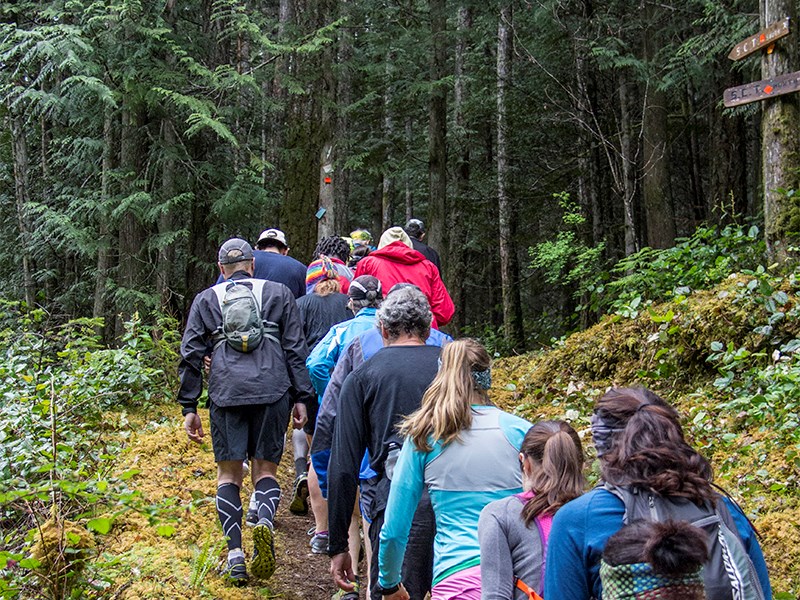Founders of the Sunshine Coast Trail are asking Powell River Regional District board for more time to consider the impact of its regional trails plan initiative.
Members of the Powell River Parks and Wilderness Society (PRPAWS) board of directors, including Sunshine Coast Trail co-founders Eagle Walz and Scott Glaspey, presented to the regional district committee of the whole on Thursday, December 15.
The regional district released the draft of Powell River Regional District regional trails plan as part of the committee of the whole agenda. Before the report was released, PRPAWS had asked for an opportunity to address the regional trails plan working group to present the organization’s concerns.
“We look forward to having a trails plan that will serve this community well,” said Walz to the committee. “At this point though, it is still somewhat flawed and I’d like to point out what we think would benefit from another look.”
Glaspey told the committee that as a co-founder of the trail, he is understandably passionate about its future.
“It’s not just some line on a map,” said Glaspey. “Tens of thousands of hours have gone into it. It is special and deserves respect.”
The draft trails plan reports that the Sunshine Coast Trail was established under Section 56 of the BC Forest Range and Practices Act and sections of the trail through Crown land are classified as multi-use, non-motorized, open to mountain bikers and other trail users.
PRPAWS board director Richie Tait told the committee that despite starting out looking for the public’s thoughts on the plan, the actual work done did not include the people who use and maintain the trails and that could affect how trails are maintained going forward.
Fellow director Wes Bingham said the basic premise throughout the regional trails plan is the assumption that all the trails will be multi-use and volunteers will do all the work.
“That sets the plan up for failure,” said Bingham. “I wish that you wouldn’t rush through approving this plan and consider it carefully because the future of our trails is in your hands.”
Glaspey added that there are undeniable conflicts that happen between hikers, mountain bikers and other user groups, but a top-down plan will not help users solve the problem.
“If you have conflicting groups, they have to get face to face and sort things out,” said Glaspey. “If somebody makes a decision and the process does not involve real face to face, then somebody’s going to get annoyed and it just breeds mistrust of the process.”
Glaspey urged the regional district to try to get this right.
“For us, this is like taking a kid away and saying you have joint custody,” he said. “I’ve been on this a long time and I am passionate.”
Instead of recommending the regional board accept the regional trails plan at its next meeting on Wednesday, December 21, the committee passed a motion to the board to have it receive the plan, a distinction that leaves the door open for more comment before it looks to implement it.
The committee is also recommending that the board establish a regional parks and trails network standing-advisory committee and recruit and retain a regional parks and trails coordinator.



